Traditional Braces – Arlington Heights, IL
A Reliable and Effective Way to Straighten Your Teeth
Does your child have crooked teeth that hinder their chewing and speaking patterns? Are you an adult who feels self-conscious about spaces and gaps in their smile? Luckily, there is a solution: traditional braces in Arlington Heights. This reliable and effective way to straighten teeth has helped millions of patients enjoy beautiful, fully functional smiles once more. To learn more about the treatment process, get in touch with our team or read on!

Why Choose Arlington Heights Orthodontics & Pediatric Dentistry For Traditional Braces?
- Orthodontist with Legacy of Excellent Care
- Top of the Line Orthodontic Technology
- Orthodontic Services Available for All Ages
How Do Traditional Braces Work?
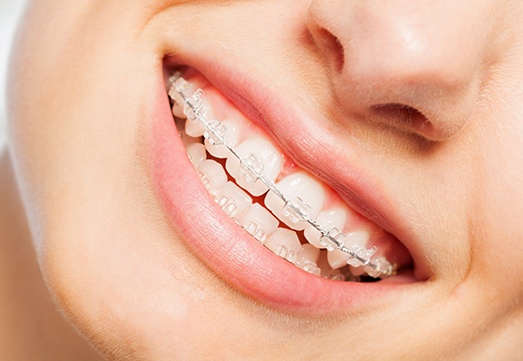
Did you know that your teeth aren’t fixed in place? They actually have tiny ligaments around them that attach to the bone, allowing them to move. With traditional braces, our orthodontist in Arlington Heights can apply just enough pressure to gradually (and safely!) guide your teeth into their properly aligned positions, addressing any overcrowding or spacing issues in the process. Every few weeks, your braces will get tightened, ensuring the gentle force continues to move your teeth in accordance with your treatment plan. Before you know it, it’ll be time to remove the metal brackets and wires to reveal your beautiful new smile!
What Orthodontic Issues Can Braces Fix?
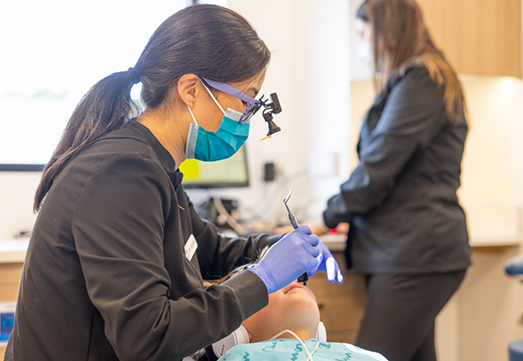
Unlike other orthodontic solutions, braces can address a wide range of problems, including:
Bite Misalignment
There are several consequences that stem from your teeth not meeting evenly. In addition to increasing your chances of Bruxism (teeth grinding), it can also result in improper chewing patterns that lead to indigestion. Don’t worry – traditional braces can address the position of your teeth and your bite seamlessly.
Crowded & Crooked Teeth
Crowded and crooked teeth can negatively impact the appearance of your smile and your oral health. After all, the unique crevices allow food particles and plaque to hide, increasing your chances of tooth decay and gum disease in the process. So, investing in traditional braces can benefit both the health and aesthetics of your smile!
Gapped Teeth
Like crowded teeth, spaced-out teeth can take a toll on your self-esteem and the condition of your teeth. Fortunately, traditional braces can seamlessly close the gaps between your teeth. That way, you can enjoy a healthier and more beautiful smile!
Caring for Your Braces
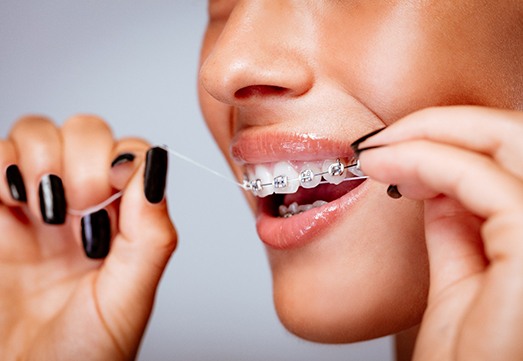
Caring for your braces (and your teeth!) is essential throughout treatment. Our orthodontist will review all of the best practices with you during your initial appointment, but here are some general ones you can expect:
- Avoid hard, sticky, and chewy foods, including popcorn, caramel apples, and meat on the bone.
- Brush for a full two minutes, cleaning the top and bottom of each bracket.
- Always floss each evening.
- Wear a mouthguard if you have Bruxism or play sports.
- Steer clear of unhealthy dental habits, like chewing on pen caps.
- Get a dental checkup and cleaning every six months.
Understanding the Cost of Traditional Braces
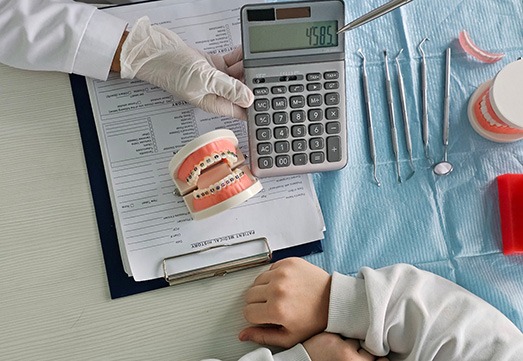
Braces are the tried-and-true solution for straightening smiles, and they have a long history of success. Whether you’re seeking treatment for yourself or your child, our team in Arlington Heights can provide traditional orthodontics to reposition teeth to improve your appearance and oral health.
However, you might avoid scheduling a consultation if you’re concerned about the cost of this service. Continue reading to learn more about how the price is determined and how our practice helps make visits more affordable!
Factors That Affect the Cost of Traditional Braces

The price for traditional orthodontics can vary from person to person because it can be impacted by several factors unique to your situation, such as:
- The severity of your condition. Patients with teeth that have farther to turn or travel take longer to shift to their ideal places, increasing the cost of treating them.
- Your age. Jawbones of older adults are more firmly set, so it can take longer for teeth to move, which raises the rate.
- The proposed timeline. Generally, the longer you wear braces, the more adjustments, supplies, and appointments you’ll have to pay for.
- The required number of follow-up appointments. You’ll need to attend routine follow-ups to monitor your progress and make adjustments, which must be paid for.
- Whether you comply with treatment guidelines. Complying with wear-time instructions, dietary restrictions, and other guidelines can preserve your braces to avoid costly repairs if they are destabilized, broke, or dislodged.
- Other services or appliances. You might require additional oral appliances, such as space maintainers, palatal expanders, headgear, elastics, or retainers, which all have their own price points.
Can I Save Money with “Do-It-Yourself” Braces?
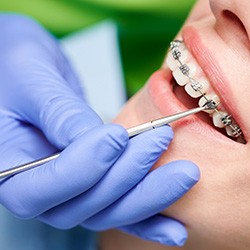
If you’re seeking possible ways to straighten your smile while reducing out-of-pocket expenses, you might feel tempted to try a “do-it-yourself” alternative to standard orthodontics. For instance, some people have attempted to create their own makeshift braces using household items, such as fishing lines, earring backs, super glue, rubber bands, dental floss, and dental wax.
However, there are several risks to trying to treat your own teeth without professional oversight. You might injure your oral or overall health, for example, by trying to attach objects that aren’t intended for oral use using adhesives that might be toxic if ingested. Furthermore, without an expert’s guidance, you might worsen your condition rather than repair it. This can potentially lead to more costly and complex services with our team that can be avoided by contacting us first.
Does Dental Insurance Cover Braces?

Your dental insurance policy can often help reduce the out-of-pocket expenses for various types of treatments, which may include standard orthodontics. For instance, this treatment might be covered if it’s been deemed medically necessary to preserve your dental health, rather than as a cosmetic solution to improve your appearance.
Many plans cover approximately 50% of the cost of braces, but there are no guarantees, and the details vary depending on your insurance provider. If your plan includes a Health Savings Account (HSA) or a Flexible Spending Account (FSA), these funds may also be applied to reduce the personal cost to you.
Traditional Braces FAQs
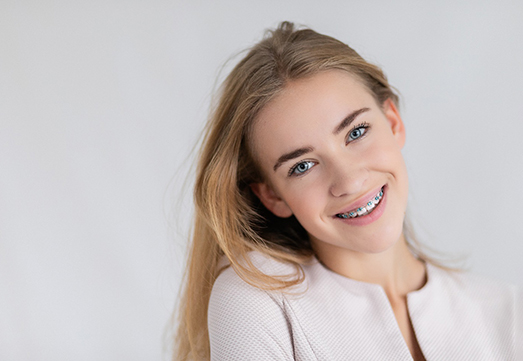
Are you unhappy with having crooked, gapped, or otherwise misaligned teeth? If so, traditional metal braces may be the ideal solution you’ve been looking for. While you might be aware of the benefits you can enjoy with a straighter smile, it’s natural to want to know as much as you can about the treatment before committing to any work. For this reason, our dental team has taken the time to compile and answer some of the most common questions we get about this orthodontic procedure. Read along or give us a call today to learn more about braces in Arlington Heights!
Can I Get Traditional Braces on Just My Top or Bottom Teeth?
You’ll first come into our office for your initial consultation so that our team can determine if you require braces on both arches or simply one. While it’s possible to get them for just one of your arches, most people will benefit from getting braces on the top and bottom. This is because they move the teeth forward and backward, which shifts the bite alignment. If you only address one arch, it could end up resulting in a mild underbite or overbite becoming more obvious. This can even lead to problems like chewing difficulties, teeth grinding, or TMJ disorder.
What Happens After You Get Braces Off?
After your braces are removed, they will no longer be applying pressure on your pearly whites. This means your teeth will begin to try moving back to their original pre-treatment positions. To avoid this, you’ll need to wear a retainer moving forward, that way you can maintain the results you worked so hard for! You’ll be able to choose either a removable retainer or one that can be permanently fixed in your mouth. If you decide on the removable option, you’ll have to wear it for 20-22 hours every day for the first several months after your treatment is finished. Once your dentist gives the green light, you’ll be able to simply wear it overnight.
Am I Too Old to Get Braces?
Most people associate metal brackets and wires with childhood and adolescence. That said, you’ll be glad to know that there isn’t an upper age limit for getting braces! While you can still wear traditional braces as an adult, you’ll simply need to remember that it can take longer for your teeth to shift positions, as they’re more firmly rooted into your jawbone. Additionally, your oral health has to be in pristine condition before you can be eligible for orthodontic treatment. If you have any dental issues before treatment, then you’ll need to undergo the proper preliminary procedures to address them beforehand. These may include fillings, gum disease treatment, and root canal therapy.
Can I Chew Gum with Traditional Braces?
Chewing gum while wearing metal braces isn’t recommended, as the sticky substance can get stuck in your wires. This can even cause them to bend, which can then shift your teeth in unexpected directions without you noticing. That said, some studies have suggested that chewing gum can alleviate discomfort and minimize gum inflammation during orthodontic treatment. It’s also been proven to reduce the risk of dental decay, as chewing it for 20 minutes after a meal will stimulate saliva production. However, if you don’t wish to jeopardize your treatment timeline, then it’s best to simply avoid chewing gum during the process.

 1430 N Arlington Heights #200,
1430 N Arlington Heights #200, (847) 255-3020
(847) 255-3020 Request Appointment
Request Appointment Patient Forms
Patient Forms Pay Online
Pay Online




